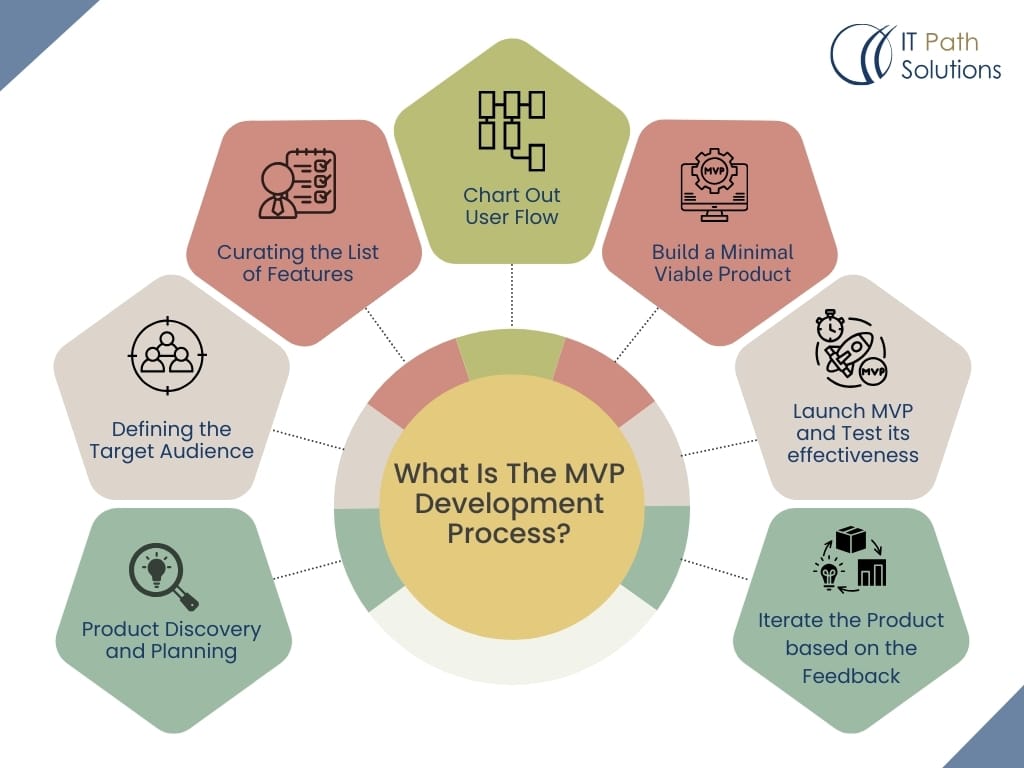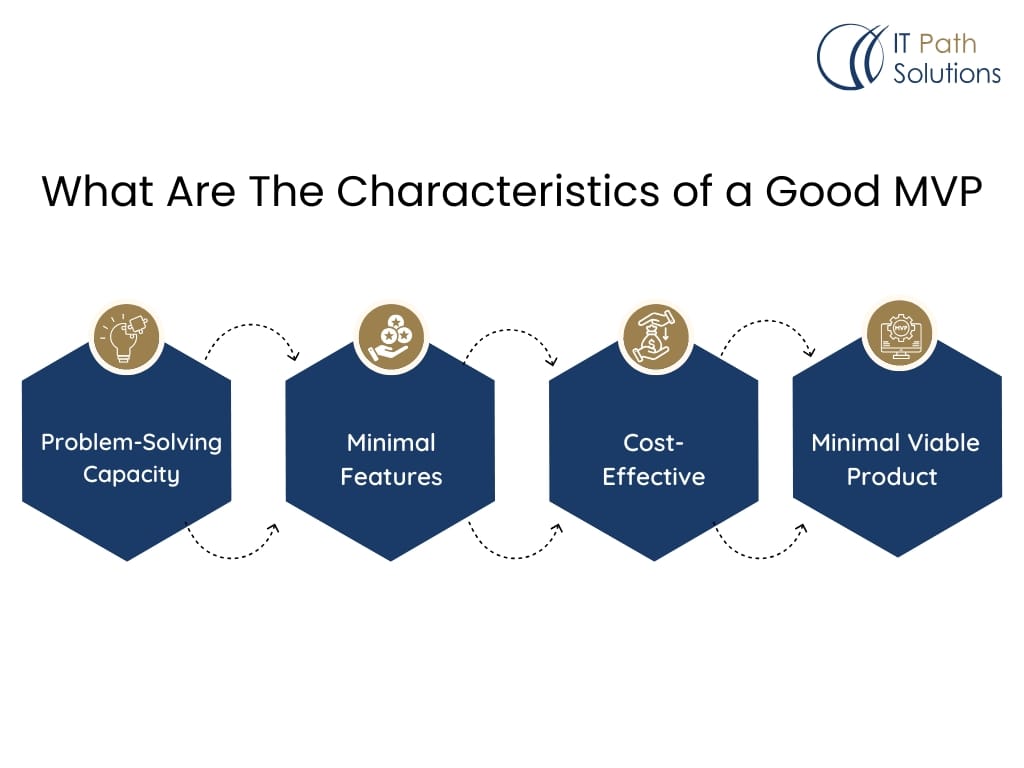What Is Minimal Viable Product Development?
Keyur Patel
September 12, 2025
8 min
Do you want your MVP to grab eyeballs and become the next big thing? Do you have a one-of-its-kind billion-dollar idea in mind? If yes, MVP development is for you!
No application can directly grab millions of downloads overnight without validating an MVP. The success stories of Facebook, Twitter, Dropbox, Airbnb, Uber, and many more prove that MVP development opens the door to scalable success.
In a world where over 137,000 startups emerge daily, testing your idea with a Minimum Viable Product is the smartest way to refine your vision, attract investors, and gain early adopters.
However, MVP development is not a mere representation of the idea, it is an execution of a well-planned strategy that can help you create a successful product in the end.
In this blog, we will learn more about a Minimal Viable Product and why businesses should build one.
What is MVP?
MVP is an abbreviation for Minimal Viable Product. It refers to the development of a basic version of a product with minimal features, representable to the audience. MVP has a faster time to market, allowing businesses to attract some early adopters of the app. It is used to get valuable inputs from the users for future app development.
Eric Ries brought the concept of MVP to life. According to him, MVP means,
The version of a new product that allows a team to collect the maximum amount of validated learning about customers with the least effort.
MVP development requires less effort because of minimal functionality requirements. It has to be viable and accommodating of various feedbacks received from the end users.
Why do Businesses need MVP?
A minimal viable product is built to quickly validate the product idea by releasing a functional product to a defined set of audience. It helps business owners check the practicality of functionality before full-scale app development.
MVP saves time, money, and resources, allowing the company to focus only on essential features.
Businesses can collect feedback using MVP and can easily iterate the product before the final release.
To summarize:
- MVP serves as a reference point using which a final product can be developed.
- By developing the first model, businesses can identify genuine feature issues and gauge users’ expectations.
- MVP helps in reducing the chance of product failure. Since businesses opting for MVP take only one step at a time, they can apparently launch a successful product into the market.
- Developing an MVP is a cost-effective approach and involves minimal cost investment.
What Is The MVP Development Process?
MVPs are usually developed during the early days of ideation. Depending on the complexity of the product idea, the duration of development might vary. We as a renowned mobile app development company, help startups to build their MVPs seamlessly.

Here are a few steps involved in MVP development.
Product discovery and Planning;
The market is full of ideas, however, you need to find a product development idea that satisfies the market needs. Conduct surveys and keep an eye on competitors to keep a check on what and how competitors offer services.
Defining the target audience for the MVP:
Prepare a document suggesting the target audience for the MVP. The document includes the target audience’s choice, needs, and how much they appreciate using technology to solve the issue.
Curating the list of features;
Ask your team questions like, what do your prospective users want from the app? How will MVP offerings be beneficial for them? What do they expect from the MVP? The answers to these questions will help you prioritize MVP features.
Chart out user flow;
Design a convenient user flow from start to end. User flow for each step will help you manage the flow of users from one stage to another.
Build a Minimal Viable Product;
Now, based on the above assessment, start developing an MVP.
Launch MVP and test its effectiveness;
An MVP is a replica of your final product. Launch it for your target audience and check for feedback. Ask them in surveys about the features they like or changes they want in the application. Assess the feedback and figure out the reiteration strategy.
Iterate the product based on the feedback;
Iterate the MVP before releasing the final product into the market. One needs to continue this process until the product reaches the perfection stage.
What Are The Characteristics Of a Good MVP?

Here are a few characteristics that make a good MVP.
Problem-solving capacity:
An MVP should be capable of solving the problem for which it is developed. A problem-solving MVP can easily grab eyeballs and will compel the audience to pay for it later when the final product is released.
Minimal features:
Do not stuff multiple features into MVP. Keep it simple and minimal to test the effectiveness of the same.
Cost-effective:
Do not invest heavily in developing an MVP. MVP should be cost-effective and easy to test.
Viable:
MVP should be flexible to changes and iterations. It should be able to incorporate the feedback with ease.
If the above things are being taken care of while developing an MVP, the success of MVP is guaranteed.
Want to Build a successful MVP? Let’s talk
What Are The Common Errors to Avoid While Developing An MVP?
MVP paves the pathway to product development. Without spending a lot of money, you get a chance to develop a product quite close to the final product. However, in this journey, you are likely to make mistakes, which is why, we have highlighted a few mistakes that you can avoid during MVP development.
Identifying the wrong problem:
Problem-solving capacity forms the base of an MVP. If you get it wrong, you are probably going to lose on successful MVP development.
Hence, it is important to brainstorm and validate the whole problem-solving assessment. For example, is the problem that the MVP is going to solve legit? Will the MVP solve the problem in the right way? Answers to these questions will assist in figuring out the exact problem that the audience needs help with.
Targeting the wrong audience:
Your audience brings the business. If you fail to identify the right audience for your MVP, you are likely to make less or no business than expected. Do not target friends and families as your audience as you are less likely to get honest feedback.
Your real users are the ones who analyze the product for you and tell you what is missing. They will provide honest feedback again once the previous feedback is iterated.
Overstuffing with features:
Stuffing multiple features altogether reduces the effectiveness of the assessment. Make sure that you integrate only a specific set of features that are designed for problem-solving.
Not evaluating qualitative and quantitative feedback correctly:
Users would give qualitative as well as quantitative feedback for an MVP. However, it is upon you to decide internally, the assessment of such feedback. Both qualitative and quantitative feedback plays a different role.
Qualitative feedback is focused on “why” and is usually related to the UI of the MVP. Quantitative feedback is focused on “how many” and “how much” of the MVP changes. Evaluating such feedback rightly will assist in better and faster MVP development.
Also read :- MVP Development for Startups: Step-by-Step Guide to Build a Winning Product
How To Measure The Success Of An MVP?
If you wish to check whether your MVP is a success or not, here are some common effective techniques to do so.
Word of Mouth:
Listen to what your customers have to say about the MVP. Ask them whether they are satisfied with the features or what they think about it overall.
Number of signups:
The number of signups suggests whether the app idea would be a success or not. Signups suggest revenue generation for the product idea.
Percentage of active users:
It is important to check the number of users who actively remain on the application after downloading the app. Check this regularly to measure the success of the app.
What Is the Difference Between a Prototype and a Minimal Viable Product?
A prototype is the primary version of the application idea, whereas an MVP is a fully functional product built to test the product. Prototypes can be partially functional, whereas MVP needs to be fully functional and polished.
A prototype is not distributed in the market, whereas an MVP is distributed in the market but accessible to a limited audience.
Parting Thoughts:
If you are working with a limited budget but have a game-changing idea, MVP development is the smartest way to bring it to life. The key to a successful MVP lies in delivering a seamless and high-quality user experience. A well-executed MVP not only validates your idea but also sets the foundation for future success.
Ready to turn your vision into reality? Let’s build your MVP together. Thank you for reading!

Keyur Patel
Co-Founder
Keyur Patel is the director at IT Path Solutions, where he helps businesses develop scalable applications. With his extensive experience and visionary approach, he leads the team to create futuristic solutions. Keyur Patel has exceptional leadership skills and technical expertise in Node.js, .Net, React.js, AI/ML, and PHP frameworks. His dedication to driving digital transformation makes him an invaluable asset to the company.

